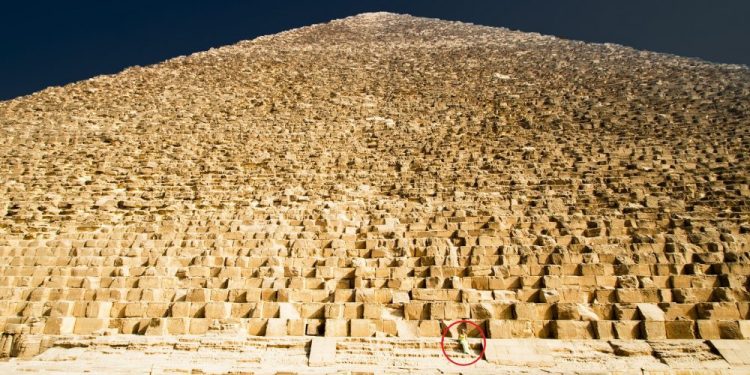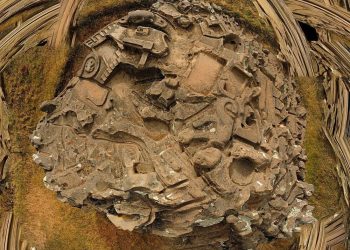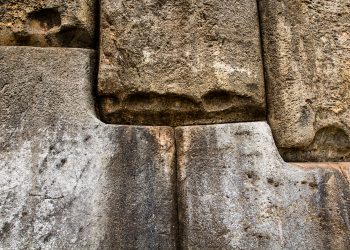Pyramids were built on nearly every continent on the surface of the planet. No matter where we decide to look, we will find that some of the most ancient civilizations on Earth erected pyramids of different shapes and sizes. The most famous pyramids are probably those at the Giza plateau, near present-day Cairo.
According to Egyptologists, it was there that some 4,500 years ago, a Pharoah of the Fourth Dynasty built the most magnificent pyramid Egypt would ever see; the Great Pyramid of Giza. But despite being the most impressive pyramid of Egypt, the structure constructed supposedly by Khufu in a 20-.year-period isn’t the largest on Earth, nor the oldest.
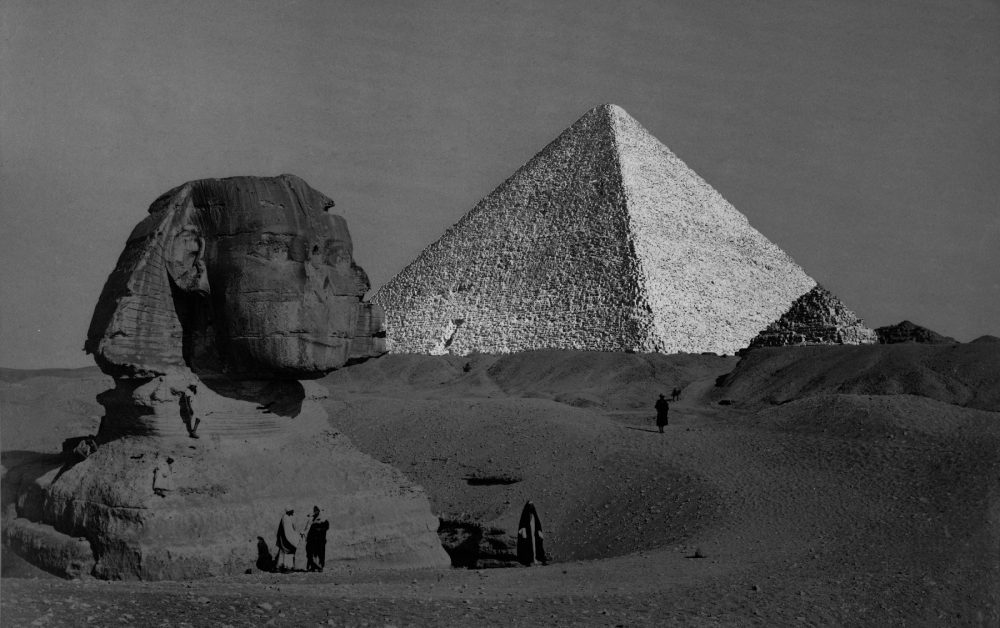
Since we can’t date stone—and most pyramids we see around the globe were built with stone—it is very difficult to date pyramids accurately. However, luckily for experts, not all pyramids were constructed exclusively out of stone. The oldest pyramids on the surface of the planet are believed to be located in South America, in what is now the country of Brazil.
Archeological excavations of what was earlier considered only earthen mounds revealed an ancient civilization erected immense pyramids in the American Continent more than 5,000 years ago. Unlike the Egyptian pyramids, the Central-American pyramids constructed in present-day Brazil were built of seashells and other lesser materials.

The structures in Brazil are recognized as the oldest examples of pyramids on Earth. Archeological excavations have survey have revealed that some pyramids in Brazil date back as far as 3,000 BC, which means they even predate the Egyptian pyramids by several hundred years. Located off the coast of southern Brazil, the pyramids of South America were far larger than the early Egyptian pyramids; Experts have found that some Brazilian pyramids reached a height of around 50 meters (160 ft), with a total base of approximately 40 acres.
The Brazilian Pyramids are evidence of the fact that more than 5,000 years ago, Brazil was inhabited by cultures that were far more sophisticated and developed than what we currently accept for a fact. The existence of the Brazilian pyramids proves that throughout South America, ancient cultures developed capabilities to build truly monumental structures more than 5,000 years ago.
The existence of the pyramids can tell us much about the society that built them: Constructing such massive pyramids means that the builders were an organized society. The pyramids were most likely built across several decades, possibly centuries, which suggests that the government (or ruler of the region) had control over not only material but human resources as well.

Ancient, massive pyramids were not only present in South America. Mexico, in Central America, is home to hundreds of examples of amazing pyramids that were built throughout the course of history. The largest pyramid on the surface of the planet is located in Mexico. Built thousands of years ago near what is now the city of Puebla and hidden beneath a mountain lie the remnants of the largest pyramids the world has ever seen; the Great Pyramid of Cholula.
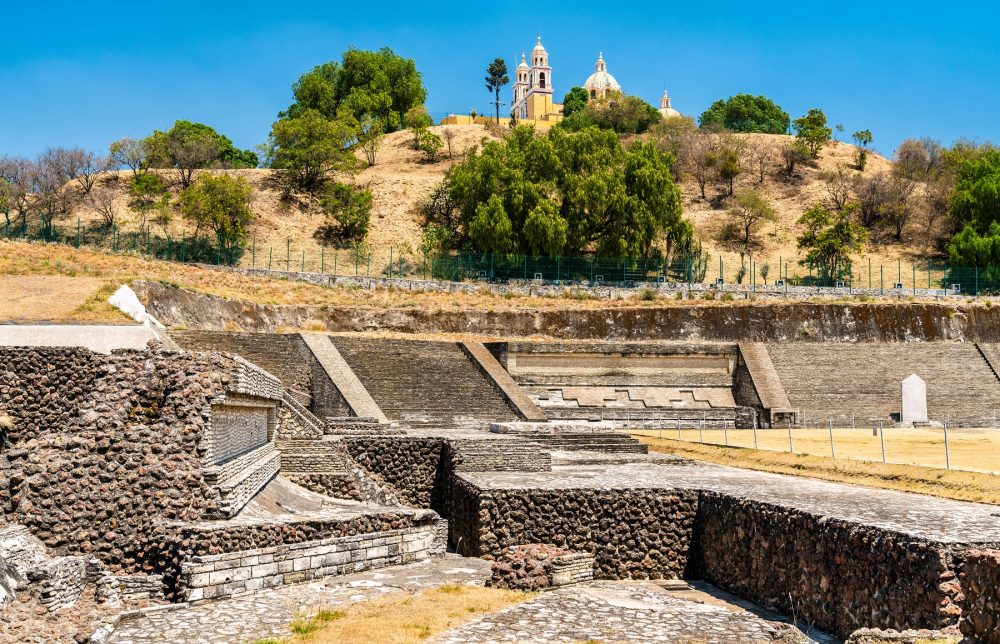
With a total volume of estimated over 4.45 million cubic meters (1,571,502,669 ft), the Great Pyramid of Cholula is even larger than the Great Pyramid of Giza, which has a total volume of 2,583,283 cubic meters (91,227,778 cu ft). The Great Pyramid of Cholula is considered the largest archeological site of a pyramid temple in the world, the largest known to exist in the world, and the largest monument ever constructed anywhere in the world. Impressive as it is, the ancient Aztecs believed that the gigantic pyramid was built by Xelhua, one of the seven giants of Aztec mythology.
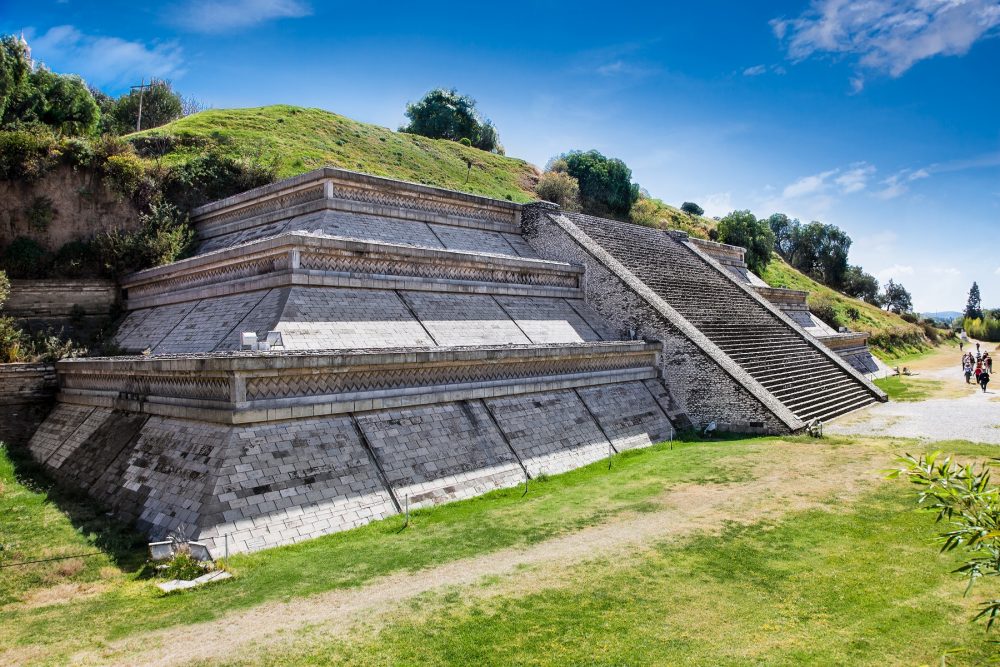
Some of the most massive pyramids in America were built in Mexico and Central America. In addition to the gigantic pyramid at Cholula, another ancient culture erected a series of mind-boggling pyramids in what is now called the ancient city of Teotihuacan. This ancient city—thought to have been one of the largest ancient metropolises on Earth—is home to three striking pyramids, some of the largest on the continent. As the construction of its pyramids, the entire city and its history are shrouded in mystery.
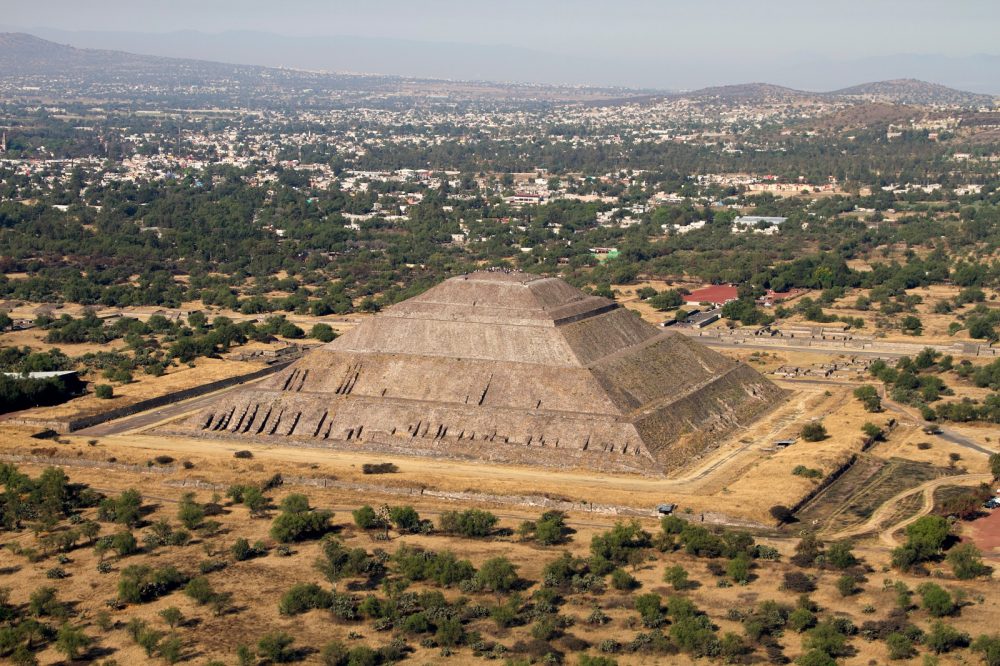
To date, we still don’t know with complete confidence what ancient culture built the city and its pyramids. We also don’t know the original name of the city. The name we use today to refer to the city—Teotihuacan—was given to pyramid-city by the Nahuatl-speaking Aztecs. They found the city in ruins and covered in vegetation.
The Aztecs were left stumped by the size of the city and its pyramids and called it Teotihuacan (Teōtīhuacān ), which translates to either “birthplace of the gods,” or “the place where gods were born.”

The size of the ancient city speaks of its importance; it once covered 8 square miles, and experts estimate that between 80 to 90 percent of the total population of the valley resided in Teotihuacan. In addition to the three main pyramids (the Pyramid of the Sun, the Moon, and the Temple of Quetzalcoatl), Teotihuacan is also known for its massive central avenue known as the “Avenue of the Dead” which is 45 meters wide and has a length of 2 kilometers. This avenue connects the most important buildings at Teotihuacan.
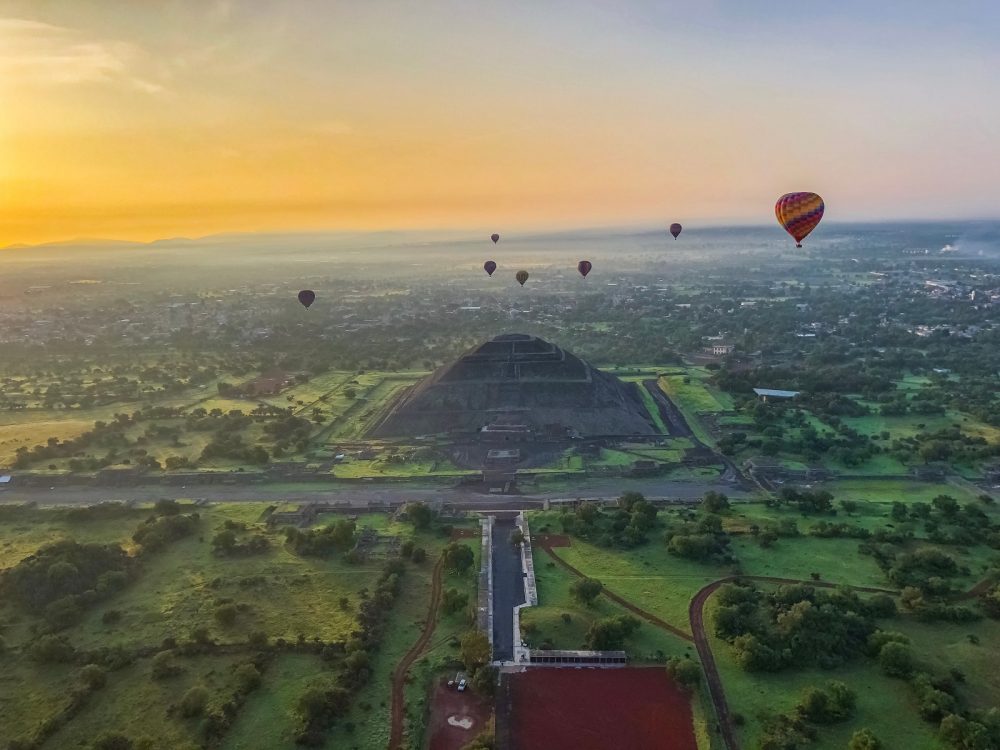
In addition to the striking pyramids at Teotihuacan (you can read more about pyramids from the American continent here), the city of El Mirador (the Lookout) in present-day Guatemala is home to another mind-boggling structure, and one of the largest pyramids on the surface of the planet, and one of the largest ever built in America.
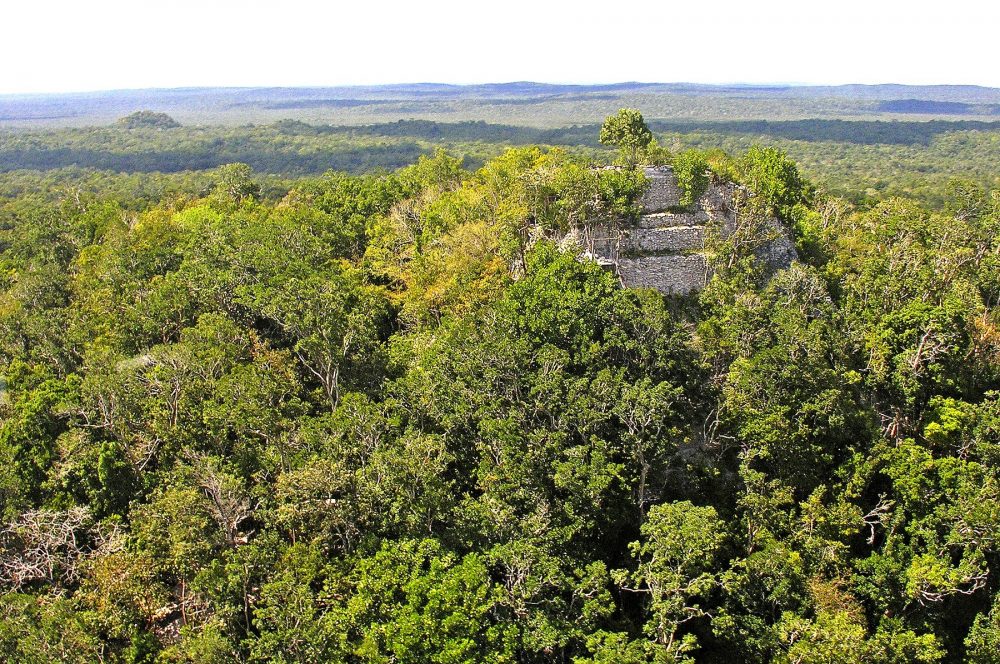
Taking into consideration the large man-made platform where the pyramid stands (approximately 180,000 square meters) then La Danta is one of the most massive ancient structures ever constructed on the surface of the planet.

North America is also home to pyramids, although many people are unaware of that. The ancient city of Cahokia was once home to hundreds of pyramid mounds, of which only a few remain in existence today. As revealed by Pyrmaidomania, Cahokia is home to more than 120 pyramids-structures, the largest of which is the so-called Monks Mound. This pyramid is roughly the same size at its base as the Great Pyramid of Giza; 13.1 acres / 5.3 hectares. Furthermore, the perimeter of Monks Mound base has been estimated to be larger than that of the pyramid of the Sun at Teotihuacan in Mexico.
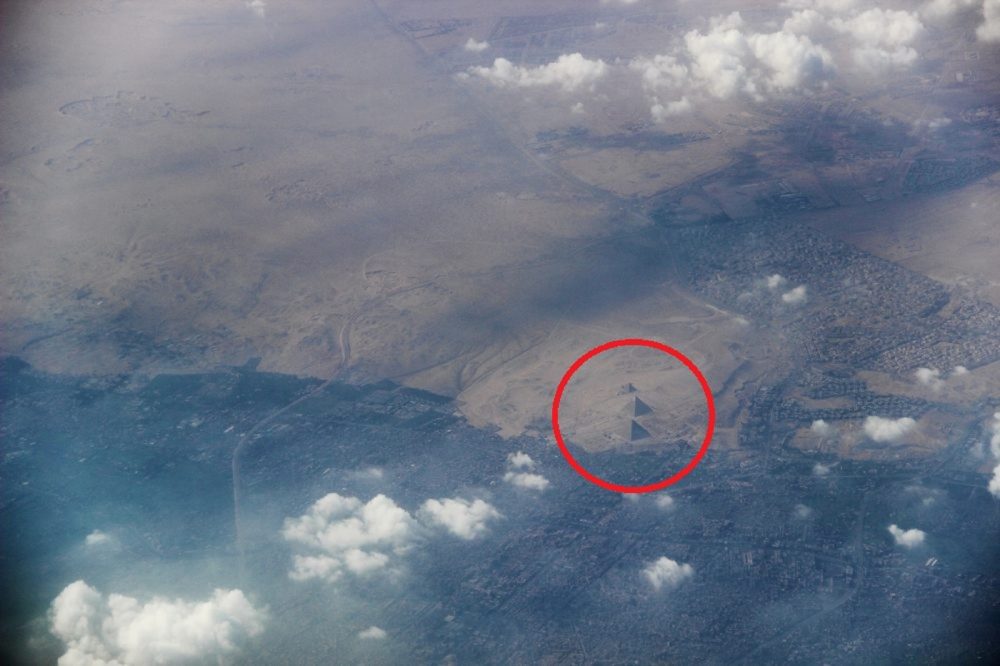
From America back to Africa and Egypt. The Great Pyramid of Giza is one of the true giants of ancient structures. Believed to have been erected some 4,500 years ago, the Great Pyramid of Giza was built with an estimated 2.34 million blocks of stone. It is the only eight-sided pyramid in existence, and Egyptologists argue its builders used more than 5.5 million tons of limestone, 8,000 tons of granite (imported from Aswan), and 500,000 tons. In other words, it is believed that the Great Pyramid of Giza has a total weight of more than 6,5 million tons.
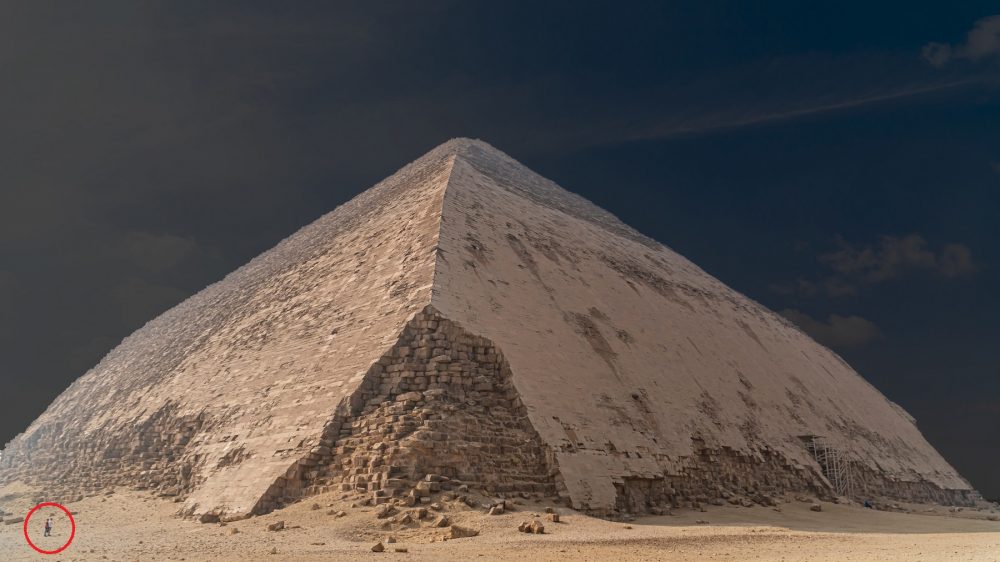
But long before the Great Pyramid of Giza came to be, other pyramids were erected in Egypt. The first Egyptian pyramid is thought to have been built around 4,700 years ago at the Royal Necropolis of Saqqara. There, according to Egyptologists, Pharaoh Djoser constructed the first Pyramid in Egypt, the Step Pyramid.
Several generations after Djoser, during the reign of King Sneferu, Egypt is thought to have built its next pyramid. This is believed to have been the pyramid of Meidum, which was succeeded by the Bent Pyramid and the Red Pyramid at Dahshur.
Sneferu is regarded as the greatest pyramid builder in the (mainstream) history of Egypt; he built at least three massive pyramids, one of which—the Red Pyramid—is the third largest pyramid in Egypt. In addition, his pyramids are thought to have played a direct role in the development and construction of Khufu’s pyramid at Giza.
Join the discussion and participate in awesome giveaways in our mobile Telegram group. Join Curiosmos on Telegram Today. t.me/Curiosmos



